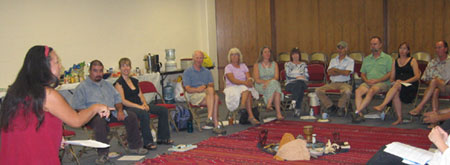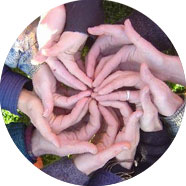| Urban Permaculture Guild |
Get the Flash Player to see this player. |
||||
| About us | Mission | Project Exchange | Membership | PC Activism | Calendar |
related Events
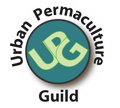
What is Permaculture?
Transtion Movement

Hear Michael Pilarski and Marish Auerbach tell us what they think.
Holmgren's Permaculture Principles!
LIVING TOGETHER
A Modern Answer to the Commune-
New York Times
UC Berkeley Extension in San Francisco
Urban Permaculture Design Classes
Permaculture for Renters- Farm Your Aparment Building’s Front Lawn
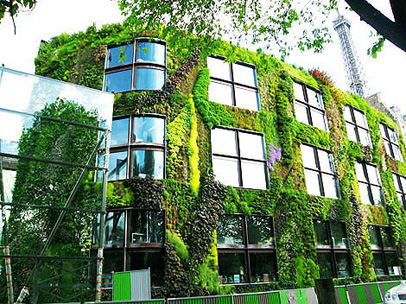
Vertical Garden from Patrick Blanc
West Coast Women's Permaculture Gathering 2011
Listen to Sustainable World Radio Pod Casts with Kat Steele,
Ianto Evans, Paul Stamets, Isabela Coelho
See preview of Geoff Lawton's Intro to Permaculture DVD
FOOD SECURITY PROJECTS
Compiled by the Marin Permaculture Guild
Within five years, half the world's population will be urban...
The World Comes To Town
Kevin Bayuk shares his Urban Permie Story.
Learn about Green Collar Jobs from the Ella Baker Center for Human Rights
Take a Daily-Acts Sustainabilty Tour.


+ Permaculture Teacher Training: Innovation in Experiential Education
Esalen Instittute
Big Sur, CA
May 13-20, 2011
Seattle, Washington
Oct 29-Nov 4, 2011
Training for Transition
Esalen Institute,
Big Sur, CA
April 17-22, 2011
Integral Farm Systems:
Urban Permaculture
Esalen Institute,
Big Sur, CA
June 5-10, 2011
San Francisco's New
FOOD POLICY
Slow is Beautiful, New Visions of Community, Leisure and Joie de Vivre-Radio Interview with Cecile Andrews
The Urban Homestead in LA
Urban Permaculture Institute of the Southeast
Merritt Community College Classes, Permaculture, Regenerative Design, Natural Building, Mushrooms, Water, etc.. Oakland, CA
+ Permaculture First Responder, Earth Activist Training, Advanced Course
+ Making a Difference, Esalen Institute, Big Sur, CA
Village Building Convergence
Watch
Video!
Watch Starhawk speak on Urban Permaculture!
Watch Oakland Urban Permie Kevin Feinstein grow food on his balcony!
Watch Al Gore speak on his latest thinking on the Climate Crisis and our responsibilities as planetary citizens at 2008TED conference
Watch Al Gore speak on the Climate Crisis at 2007TED conference!
Support the South Central Farmers Now, Help Save the Largest Urban Farm in USA
Support People's Grocery and Healthy Food for Everyone
Support Bay Area Relocalize
Think and Act gLocal
Greening Burning Man
How would you do it?
Watch Edible Estates
Video !
Watch David Holmgren Videos !
Watch Grow Here Now Video!
Watch Toby Hemenway's Permaculture Slide Show!
Watch Guerilla Gardening Video !
Watch the Story of Stuff
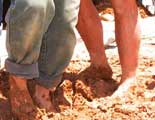
|
Business Alliance for Local Living Economies BALLE |
|
Martha Dominguez shares her indigenous wisdom with the recent Ecovillage Design Education World View Course at the University of New Mexico.
See how Permaculture Designer Geoff Lawton worked with Jordanians to salvage heavily salted deserts and transform into green oasis!! Listen to Kat Steele and David Blume So we are faced with the difficult question. "How can permaculture address life in a city?"When applying Permaculture to an urban environment, it is especially important to understand the principle, "the problem is the solution." We all know that it is very easy to identify problems in most cities, but this can work to our advantage if we are intent on creating solutions rather than merely drawing attention to the problems. First, we might think of a city's characteristics in terms of an ecosystem such as a forest. A mature forest has a forest canopy, which in a city is the top of tall buildings. Mid-sized buildings can be anagolous to the forest understory. Small buildings and other human and natural structures are parallel to a forest's shrubs and ground cover. Finally, the city equivelant to a forest's soil could be streets, sidewalks and yards. Once we look at the city's elements as opportunities to create beauty through design, we begin to fiind solutions, including:
Remember, it is a conscious choice for us to see "impediments" to rebuilding sustainabale cities and "resources" and "opportunites." Urban areas have lots of energetic people who, when putting their minds and hearts together, can create beautiful, healthy, liivng environments in the midst of supposed chaos. excerpted
from an EarthLight
magazine article by Jeff Brown |
|
Quotables "We're only truly secure when we can look out our kitchen window and see our food growing and our friends working nearby." -Bill Mollison, co-founder of Permaculture |
|
|




